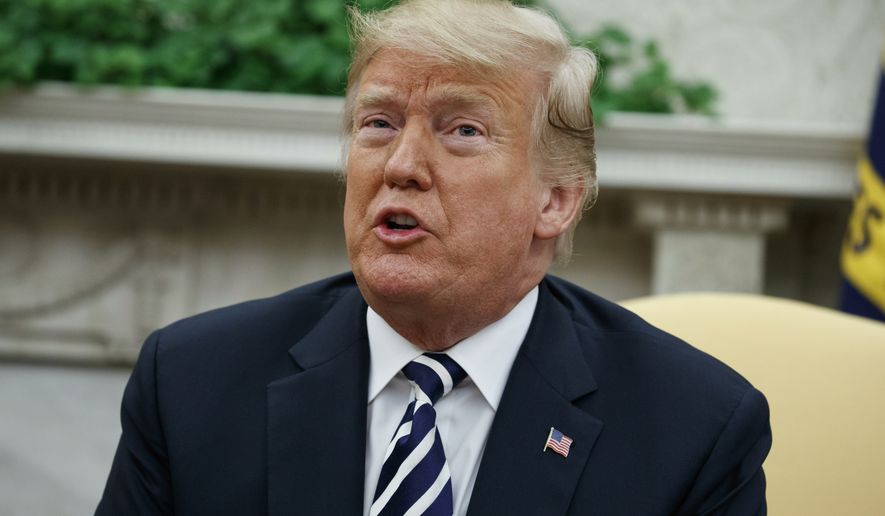President Trump signed a memo Tuesday ordering the government to come up with better defenses against bio-attacks, saying the threat of a coordinated attack, the accidental release of lab pathogens or an outbreak of Ebola is “very real.”
Senior officials said Mr. Trump felt there wasn’t a clear line of accountability in case of an attack, and he wanted to make sure all parts of government are aware of their responsibilities.
“It is really the first-ever holistic look across the government to see where are we acting, and where might there be any gaps in light of our awareness of threats, our preparedness needs, and our ability to respond,” said Health Secretary Alex M. Azar II, who will coordinate efforts as chief of a Cabinet-level steering committee on threats.
Congress in 2016 ordered the executive branch to examine how several major agencies would respond to a bio-attack. The administration discovered that responsibilities spanned 15 different agencies, and it was unclear who was in charge.
Mr. Azar will review government roles and report back to the National Security Council at the White House. What they find will guide budget requests to Congress, and could change from year to year as risks evolve.
“It’s intended to be a living document that we can update and revise in light of the circumstances,” said National Security Adviser John R. Bolton.
Mr. Trump said he felt it made sense to put every form of biological threat — natural, deliberate or accidental — under the same framework, in a “first for the United States government.”
“Biological threats emanate from many sources, and they know no borders,” Mr. Trump said in a statement. “They have great potential to disrupt the economy, exact a toll on human life, and tear at the very fabric of society.”
While there isn’t a specific threat from rogue actors, Mr. Bolton said his team is constantly monitoring a range of countries and terrorist groups that could acquire and deploy biological weapons in the U.S.
“We all focus on nuclear weapons, but biological weapons and chemical weapons are very, very dangerous,” he said. “Bio and chem are often referred to as the poor man’s nuclear weapon, so they’re particularly attractive to terrorist groups that want to try and cause great damage to us here at home.”
Mr. Azar said the steering committee will also look at security measures at labs that handle dangerous pathogens, and review efforts to thwart disease outbreaks before they make it to the U.S.
A West African outbreak of Ebola underscored the border-hopping threat of deadly viruses in 2014. And right now, border agents are checking 100,000 travelers per day in the Democratic Republic of Congo, where an Ebola outbreak in northeastern provinces has killed nearly 100 people.
Meanwhile, former Russian spies were poisoned in England, the recent Zika virus outbreak introduced a new threat to newborns and the U.S. is coming off a devastating flu season that killed dozens of children.
“Why a biodefense strategy? The simple answer is that biological threats of a man-made, accidental, or naturally occurring nature are very real and they’re growing,” Mr. Azar said.
Officials noted that Mr. Trump signed the memo 17 years after anthrax attacks that rocked the U.S. in the wake of the Sept. 11, 2001, terror attacks.
Mr. Azar was at the forefront of the anthrax response as a key official in the Bush administration. While the FBI held spores as criminal evidence, the Centers for Disease Control and Prevention was called in to evaluate the substance.
The Blue Ribbon Study Panel on Biodefense, a private entity that says the U.S. is vulnerable to a bio-attack, gave the administration kudos for implementing the plan, which Congress ordered up in its 2017 defense authorization bill.
“We look forward to the White House assigning responsibilities for each element of this Plan to specific federal departments and agencies, and establishing timelines for their completion,” said former Pennsylvania Gov. Tom Ridge, who co-chairs the panel. “This is the sort of proactive planning and preparation the American people are looking for in their federal government.”
• Tom Howell Jr. can be reached at thowell@washingtontimes.com.




Please read our comment policy before commenting.